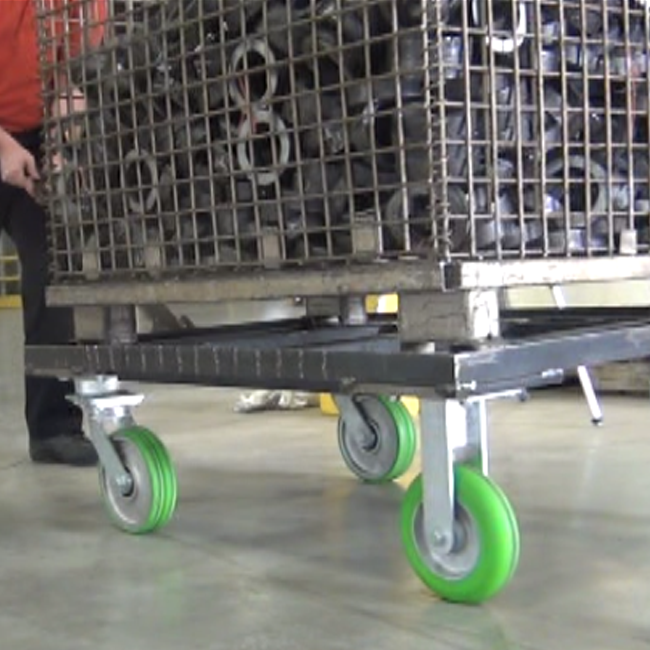

In the material handling world, an industrial caster consists of a wheel and a rig that is available in different configurations and in a rigid or swivel design.
Which configuration (rigid or swivel) you choose depends on a few key factors. How much weight you need to move, how far you have to move it, and how much space you have to work with.
An industrial rigid caster is a wheel mounted to a stationary fork, or rig. These casters are made for straight-line travel and can’t be steered. The idea is to restrict vehicle motion so the vehicle travels in a straight line.
While this limits maneuverability, rigid casters are stronger than swivel casters and can handle higher weight capacities. An industrial swivel caster also incorporates a wheel mounted to a fork, but an additional swivel joint above the fork allows the fork to freely rotate about 360°. This makes it easy to move the wheel in any direction without changing its orientation.
One evolution of the swivel caster is the swivel-on-swivel design. This places a swivel section on top of a swivel section to achieve a longer swivel lead than conventional casters. The big advantage is the reduced force required to rotate the caster and start it rolling. Also, the 2nd swivel section transfers energy to the 1st swivel section. This aids with the rotation and reduces the amount of shifting that occurs. This is extremely beneficial when maneuvering the cart in tight areas. By reducing shifting and the force needed to rotate the caster and change direction, the dual swivel caster reduces operator fatigue and the risk of injury.
The wheel of the caster is the other side of the equation and it has a profound impact on push force and cart movement.
Carts with wheels made from harder materials will generally be easier to get moving than those with wheels made from softer materials. Harder materials have lower starting resistance. This is the resistance or force to overcome to get the wheels in motion. They also have lower rolling resistance, which means it takes less force to keep them moving at a constant speed.
Wheels made from softer materials are generally quieter and easier to use because they transmit less vibration. They are designed for lighter loads, and they help preserve soft floor materials which might be damaged by a harder wheel.
In a perfect world, decisions are based specifically on an application’s height requirements and running surface. Realistically, cost constraints often come into play. That’s why Caster Concepts offers a variety of ergonomic caster configurations to meet every customer’s budget. These wheels help reduce the risk of injury for cart operators and reduce the amount of manpower required to safely move loads. Here are a few examples of our most popular wheels:
The Ergo-X or donut tread wheel is our most cost-effective medium-capacity ergonomic option.
TWERGO® wheels are the ultimate medium to light duty ergonomic solution. Our TWERGO (Twin Ergonomic) wheels feature a patented parabolic face, and a twin or triple wheel design where each wheel rotates independently, virtually eliminating scrubbing and giving operators the ability to maneuver carts with ease.
We also offer a full line of low-profile heavy-duty casters and wheels including heavy duty swivel & locking casters, designed for industrial applications. If we don’t have it available in our catalog, we can build a custom caster to exact specifications.